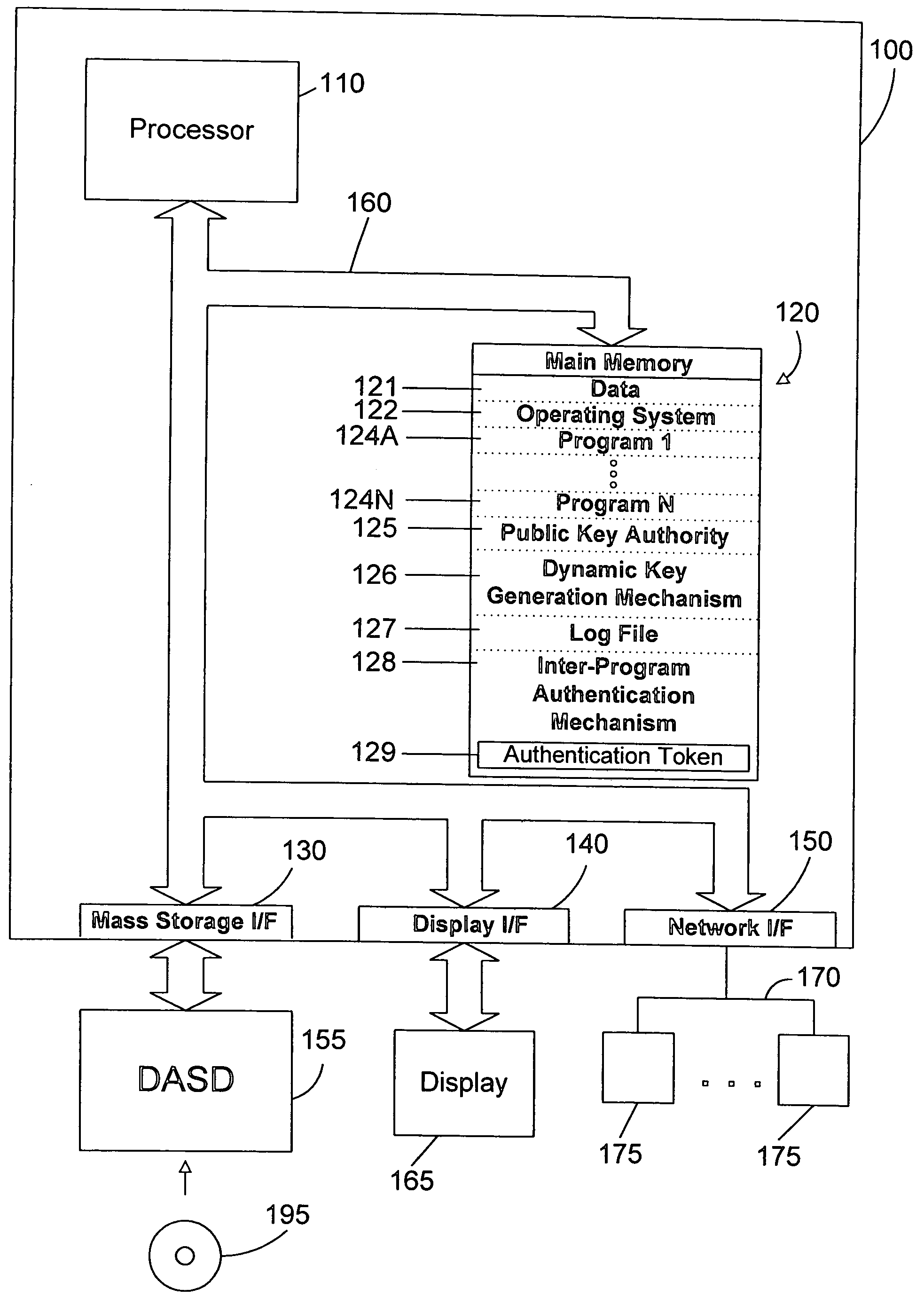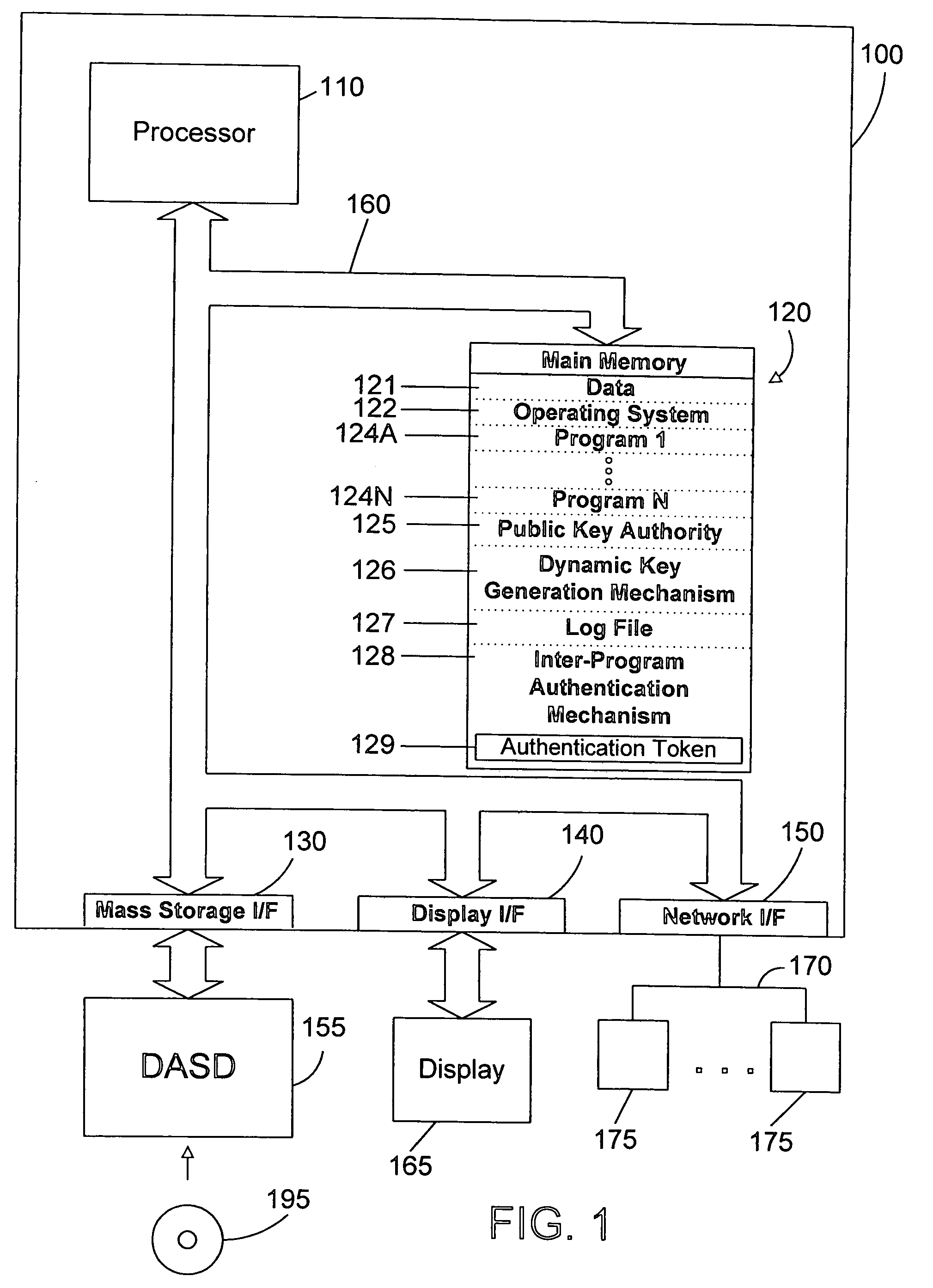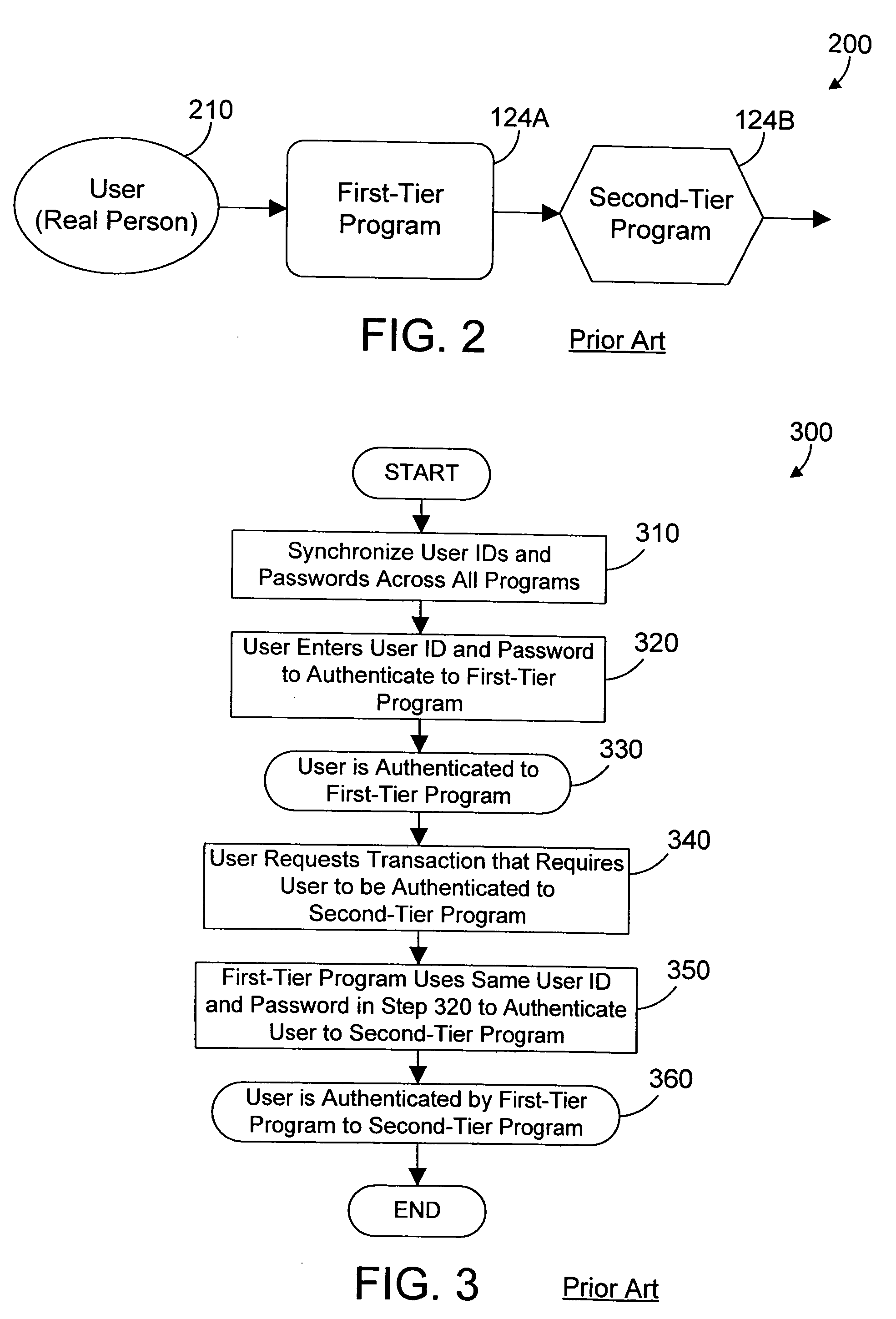Apparatus and method for inter-program authentication using dynamically-generated public/private key pairs
a dynamically generated public/private key technology, applied in the field of computer systems, can solve the problems of increasing the overhead of administrating a computer network, storing secure passwords, and user inconvenience, and achieving the effect of reducing the number of users, and reducing the number of authentication methods
- Summary
- Abstract
- Description
- Claims
- Application Information
AI Technical Summary
Benefits of technology
Problems solved by technology
Method used
Image
Examples
Embodiment Construction
1.0 Overview
[0035] The present invention is directed to authentication between programs in a multi-tiered heterogenous computing environment. A discussion below presents the current state of the art to allow a proper understanding of the significance of the preferred embodiments.
[0036] Referring to FIG. 2, a simple 2-tier computing environment 200 is shown. A user 210 authenticates to the first-tier program 124A, and then requests of the first-tier program some action or function that is provided by the second-tier program 124B. As a result, the first-tier program 124A needs to authenticate to the second-tier program 124B on behalf of user 210. There are many ways known in the art for the first-tier program 124A to authenticate to the second-tier program 124B. Some of these are discussed below.
[0037] Referring to FIG. 3, one prior art method 300 synchronizes user IDs and passwords across all programs, then uses the same user ID and password to authenticate to each program. The f...
PUM
 Login to View More
Login to View More Abstract
Description
Claims
Application Information
 Login to View More
Login to View More - R&D
- Intellectual Property
- Life Sciences
- Materials
- Tech Scout
- Unparalleled Data Quality
- Higher Quality Content
- 60% Fewer Hallucinations
Browse by: Latest US Patents, China's latest patents, Technical Efficacy Thesaurus, Application Domain, Technology Topic, Popular Technical Reports.
© 2025 PatSnap. All rights reserved.Legal|Privacy policy|Modern Slavery Act Transparency Statement|Sitemap|About US| Contact US: help@patsnap.com



